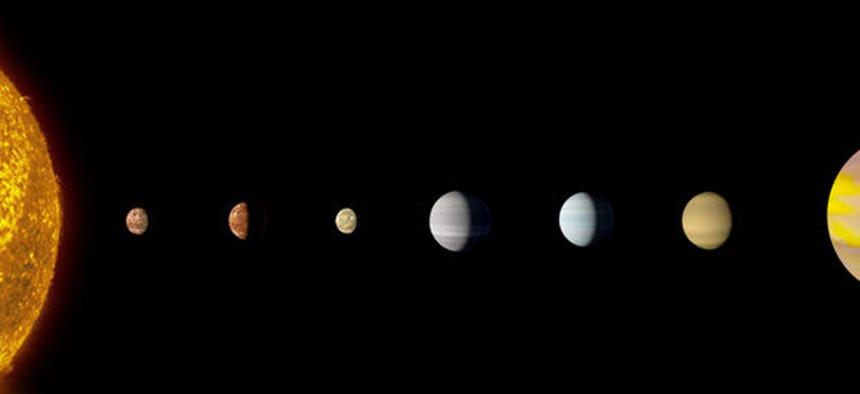NASA Gets Help From Google to Find Alien Planet

NASA
Machine learning is helping to unlock the secrets of outer space.
Google has put its machine learning skills to the test in order to help NASA hunt for planets.
The partnership's most recent discovery was that Kepler-90, a star similar to our own sun but 2,545 light-years away, has an eighth planet. This means that our own solar system and the Kepler-90 system are now tied for the title of "Most planets around a single star."
NASA gave the newly discovered planet the creative name of Kepler-90i.
Google's machine learning technology is trained to spot patterns within large data sets. The data set in this project is made up of signals spotted by NASA's Kepler Space Telescope.
NASA Astronomer Andrew Vanderburg and senior software engineer at Google Christopher Shallue began training the AI by showing it 15,000 signals that had been previously vetted as actual exoplanets, NASA said.
Then they gave the AI new data sets to comb through.
“We got lots of false positives of planets, but also potentially more real planets,” Vanderburg said in a statement. “It’s like sifting through rocks to find jewels. If you have a finer sieve then you will catch more rocks but you might catch more jewels, as well.”
Kepler 90i, while an exciting discovery, isn't exactly a great travel destination. NASA estimates the surface of the rocky planet has an average temperature of 800 degrees Fahrenheit.
Learn more about the project from NASA's recent Reddit AMA or in the video below from NASA:



